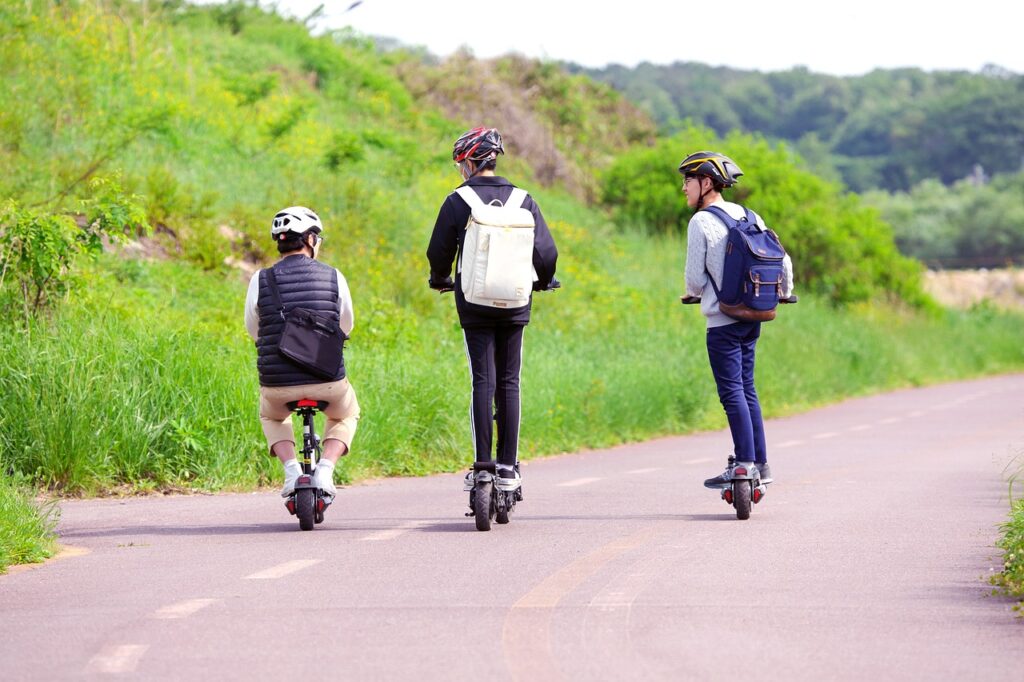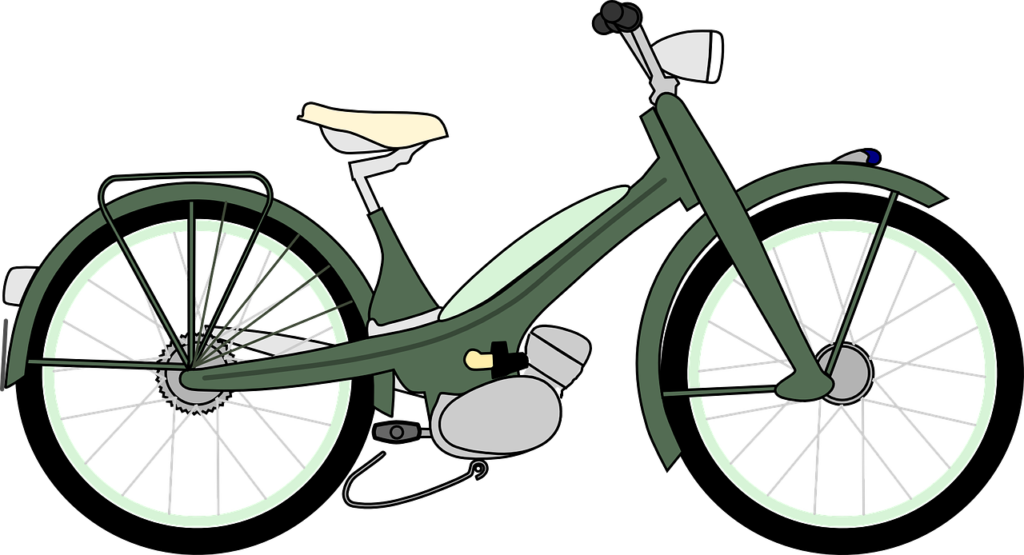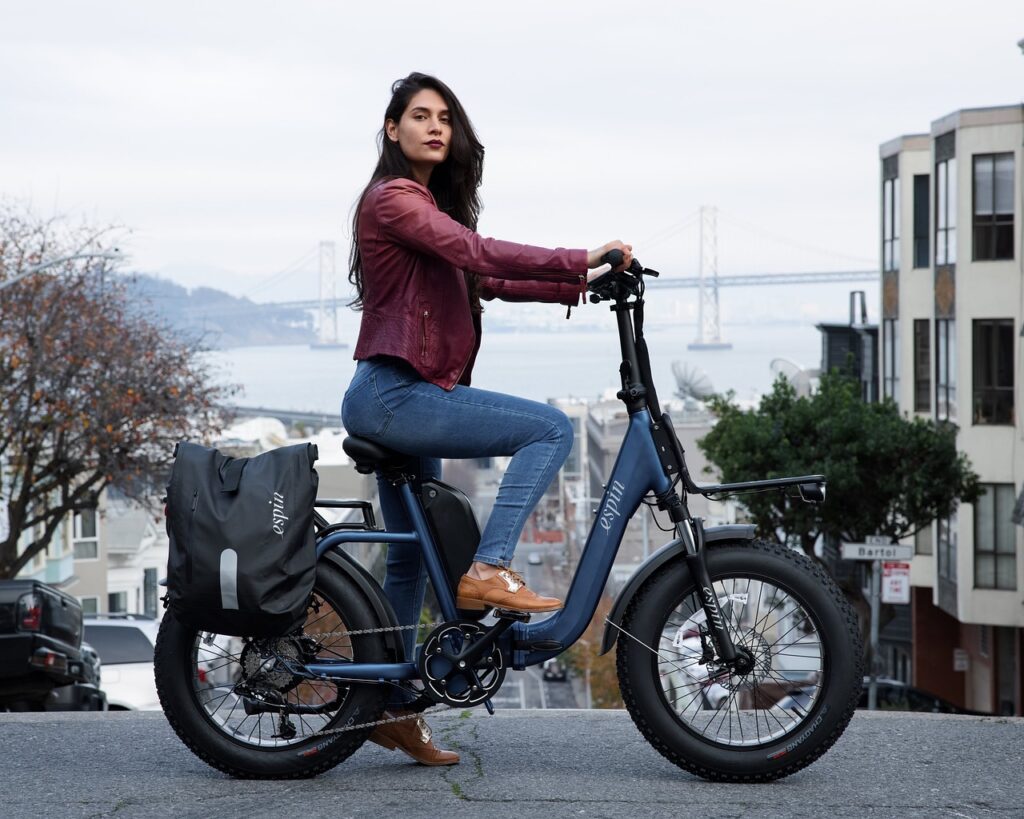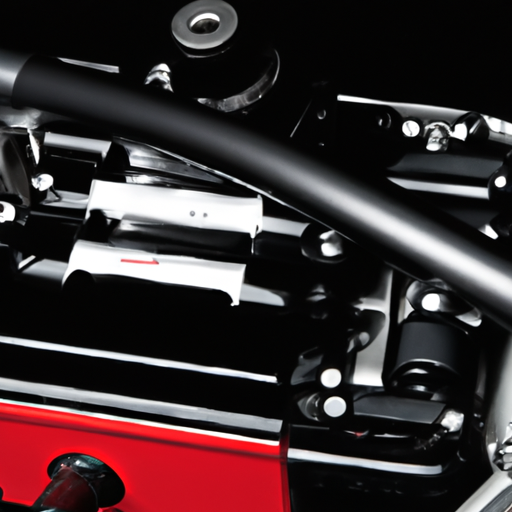If you’ve ever wondered how an e-bike works, you’re in the right place! This article is part of a series of posts that aim to provide new e-bike riders with a solid understanding of the basics. Whether you’re planning to ride your electric bike in urban areas or venture off-road, the Beginner E-Bike Tips category is your comprehensive resource. These articles will equip you with foundational knowledge, step-by-step guides, and essential tips to help you become a confident e-biker. So, let’s dive in and discover the inner workings of an e-bike!
Components of an E-Bike
Motor
The motor is the heart of an e-bike. It is responsible for providing power to propel the bike forward. There are two main types of motors used in e-bikes: hub motors and mid-drive motors. Hub motors are typically located in the front or rear wheel hub, while mid-drive motors are positioned near the pedals. The choice of motor type depends on the intended use and performance requirements of the e-bike.
Battery
The battery is what provides the energy needed to power the motor. E-bikes commonly use lithium-ion batteries and lead acid batteries. Lithium-ion batteries are lightweight, have a longer lifespan, and provide higher energy density compared to lead acid batteries. The capacity rating of the battery determines how long the e-bike can run before needing to be charged.
Controller
The controller acts as the brain of an e-bike system. It regulates the power output from the battery to the motor, ensuring smooth and efficient operation. Additionally, the controller can also have features like speed and torque control, regenerative braking, and various modes of operation. The controller is typically integrated with the motor or positioned in a central location on the e-bike.
Throttle
The throttle allows the rider to control the speed of the e-bike. There are several types of throttle mechanisms available, including twist throttle, thumb throttle, half grip throttle, full grip throttle, and variable speed throttle. Each type has its own unique design and operation, giving riders the flexibility to choose their preferred method of controlling the e-bike’s speed.
Pedal Sensor
The pedal sensor detects when the rider is pedaling and sends a signal to the controller to activate the motor assist. There are different types of pedal sensors, such as cadence sensors, torque sensors, and combined sensors. Cadence sensors measure the rotation of the pedals, while torque sensors measure the force applied to the pedals. Combined sensors use a combination of both methods to provide a more refined motor assist.
Display Panel
The display panel provides the rider with important information about the e-bike’s performance and settings. It commonly features a battery level indicator, speedometer, odometer, trip meter, and assist level indicator. The display panel allows riders to conveniently monitor their battery life, track their speed and distance traveled, and adjust the e-bike’s motor assist levels.
Motor Types
Hub Motors
Hub motors are one of the most common types of motors used in e-bikes. They are located in either the front or rear wheel hub and provide direct power to the wheel. Hub motors are known for their simplicity, ease of installation, and low maintenance requirements. They offer good acceleration and are suitable for urban commuting or leisurely rides.
Mid-drive Motors
Mid-drive motors are positioned near the pedals, adding extra power to the drivetrain. This type of motor provides better weight distribution, allowing for improved handling and stability. Mid-drive motors are more efficient and offer better torque compared to hub motors. They are ideal for off-road riding or e-bikes intended for more demanding terrains.

Motor Power and Voltage
Power Rating
The power rating of an e-bike motor determines how much power it can deliver. It is usually measured in watts (W) and can vary from a few hundred watts to several thousand watts. Higher power ratings generally result in faster acceleration and higher top speeds. The power rating of the motor should be chosen based on the rider’s specific needs and intended use of the e-bike.
Voltage Rating
The voltage rating of an e-bike motor refers to the electrical energy required to power the motor. E-bikes commonly operate on voltages ranging from 24V to 72V. Higher voltage ratings generally allow for higher motor power and performance. The voltage rating of the motor should align with the battery voltage to ensure compatibility and optimal operation.
Battery Types and Capacity
Lithium-ion Batteries
Lithium-ion batteries have become the standard choice for e-bikes due to their superior performance characteristics. They are lightweight, have a longer lifespan, and offer higher energy density compared to other battery types. Lithium-ion batteries also have faster recharge times and are more environmentally friendly.
Lead Acid Batteries
Lead acid batteries are an older technology but are still used in some e-bikes. They are heavier and have a lower energy density compared to lithium-ion batteries. Lead acid batteries also have a shorter lifespan and slower recharge times. However, they are generally more affordable and have a lower risk of thermal runaway.
Capacity Rating
The capacity rating of an e-bike battery refers to the amount of energy it can store. It is typically measured in ampere-hours (Ah) and determines how far the e-bike can travel before needing to be recharged. Higher capacity batteries allow for longer rides, but they also tend to be larger and heavier. The capacity rating of the battery should be chosen based on the rider’s expected travel distance and desired range.

E-Bike Modes
Pedal Assist Mode
Pedal assist mode, also known as PAS (Pedal Assist System), provides motor assistance when the rider pedals. The motor’s power output is adjusted based on the rider’s pedaling intensity, providing a natural and seamless riding experience. Pedal assist mode is great for conserving battery power and extending the e-bike’s range.
Throttle Mode
Throttle mode allows the rider to control the e-bike’s speed solely with the throttle, without the need for pedaling. This mode is typically used for instant acceleration or when the rider needs a boost on challenging terrains. Throttle mode provides full control over the motor’s power output and is well-suited for quick bursts of speed.
Combination Mode
Combination mode combines both pedal assist and throttle modes, allowing the rider to choose between pedaling or using the throttle for power. This mode offers the best of both worlds, providing flexibility and control over the e-bike’s performance. Combination mode is a popular choice for riders who want the option of motor assistance while still getting some exercise.
Controller Function
Regulates Motor Power
The controller plays a crucial role in regulating the power output from the battery to the motor. It ensures that the motor receives the appropriate amount of power based on the rider’s input and the selected mode of operation. The controller monitors various factors such as speed, pedaling intensity, and throttle input to adjust the motor’s power output accordingly.
Determines Speed and Torque
The controller also determines the e-bike’s speed and torque output. It can be programmed to limit the maximum speed to comply with local regulations or to match the rider’s preferences. Additionally, the controller can adjust the torque output of the motor to provide different levels of assistance, allowing riders to customize their riding experience.

Throttle Operation
Twist Throttle
A twist throttle operates by twisting the grip on the handlebar to control the e-bike’s speed. It provides a smooth and intuitive method of controlling the motor’s power output. Twisting the throttle in one direction increases speed, while twisting it in the opposite direction applies regenerative braking, decelerating the e-bike.
Thumb Throttle
A thumb throttle is operated by pressing a button or lever with the rider’s thumb to control the e-bike’s speed. It offers a compact and easy-to-reach control method, allowing for quick and precise adjustments. Pressing the button or lever increases speed, while releasing it applies regenerative braking.
Half Grip Throttle
A half grip throttle is a combination of a twist throttle and a standard grip. It allows the rider to control the e-bike’s speed by either twisting the throttle or applying pressure to the standard grip. This hybrid design provides multiple control options, catering to different riding preferences.
Full Grip Throttle
A full grip throttle is similar to a twist throttle but has a larger grip surface. It offers enhanced comfort and control, especially for riders with larger hands. Twisting the throttle in one direction increases speed, while twisting it in the opposite direction applies regenerative braking.
Variable Speed Throttle
A variable speed throttle allows the rider to adjust the e-bike’s speed within a range of options. It typically features different speed settings or a separate dial to control the motor’s power output. This type of throttle offers precise speed control and is suitable for riders who want finer adjustments to match their riding conditions.
Pedal Sensor Types
Cadence Sensors
Cadence sensors detect the rotation of the pedals and send a signal to the controller to activate the motor assist. They are the simplest and most common type of pedal sensors. Cadence sensors provide a consistent and predictable level of motor assistance based on the rotational speed of the pedals.
Torque Sensors
Torque sensors measure the force applied to the pedals and provide motor assistance proportionate to the rider’s pedaling effort. They offer a more natural and responsive riding experience by adjusting the motor’s power output based on the rider’s pedaling intensity. Torque sensors provide a smoother transition between motor assistance levels.
Combined Sensors
Combined sensors utilize both cadence and torque sensing methods to provide a more refined and customizable motor assist. By combining the two sensing methods, combined sensors can offer a wider range of assistance levels and adapt to varying riding conditions. This type of pedal sensor provides a flexible and versatile riding experience.

Display Panel Features
Battery Level Indicator
The battery level indicator on the display panel shows the current charge level of the e-bike’s battery. It allows riders to monitor their remaining battery life and plan their rides accordingly. The indicator typically consists of multiple bars or a percentage display, providing a clear visual representation of the battery’s charge level.
Speedometer
The speedometer displays the current speed at which the e-bike is traveling. It helps riders maintain a consistent speed and adhere to speed limits. The speedometer can be displayed in either kilometers per hour (km/h) or miles per hour (mph), depending on the rider’s preference or the region’s unit of measurement.
Odometer
The odometer keeps track of the total distance traveled by the e-bike. It provides riders with a cumulative measurement of their rides and allows them to monitor their overall mileage. The odometer can be reset to zero, making it useful for tracking individual trips or maintaining a record of the e-bike’s total distance.
Trip Meter
The trip meter displays the distance traveled during a specific trip or ride, separate from the overall mileage recorded by the odometer. It allows riders to keep track of their current trip distance and reset the meter for every new ride. The trip meter is useful for monitoring performance or comparing distances between different rides.
Assist Level Indicator
The assist level indicator on the display panel shows the current level of motor assistance. It allows riders to easily adjust and monitor the motor’s power output based on their desired level of assistance. The indicator typically consists of multiple bars or numeric values, making it easy to understand and select the preferred assistance level.
How E-Bike Works
Motor Activation
When the e-bike is turned on, the motor is initially in standby mode and requires a signal to activate. The activation signal can come from the pedal sensor detecting pedaling motion or from the throttle input. Once the motor is activated, it starts providing power to the drivetrain, propelling the e-bike forward.
Power Delivery
The controller regulates the power delivery from the battery to the motor based on the rider’s input and the selected mode of operation. It ensures that the motor receives the appropriate amount of power for efficient operation. The power delivery can be adjusted to provide varying levels of assistance, allowing the rider to customize the e-bike’s performance.
Assist Levels
E-bikes offer different levels of motor assistance to match the rider’s preferences or riding conditions. The assist levels can be adjusted using the display panel or controller settings. Higher assist levels provide more motor power and acceleration, while lower levels conserve battery power and offer a more natural riding experience.
Control and Monitoring
The controller continuously monitors various factors such as speed, pedaling intensity, and throttle input to maintain optimal performance. It regulates the motor’s power output to match the rider’s input and ensures a smooth and controlled riding experience. The display panel provides real-time information for the rider to monitor and adjust the e-bike’s settings as needed.
In conclusion, e-bikes consist of several key components such as the motor, battery, controller, throttle, pedal sensor, and display panel. Each component plays a crucial role in the overall operation and functionality of the e-bike. Understanding how these components work together and the different modes and features they offer is essential for any e-bike rider. By familiarizing yourself with the various motor types, power and voltage ratings, battery types and capacity, throttle operation, pedal sensor types, and display panel features, you can make informed choices and fully enjoy the benefits of riding an e-bike.




